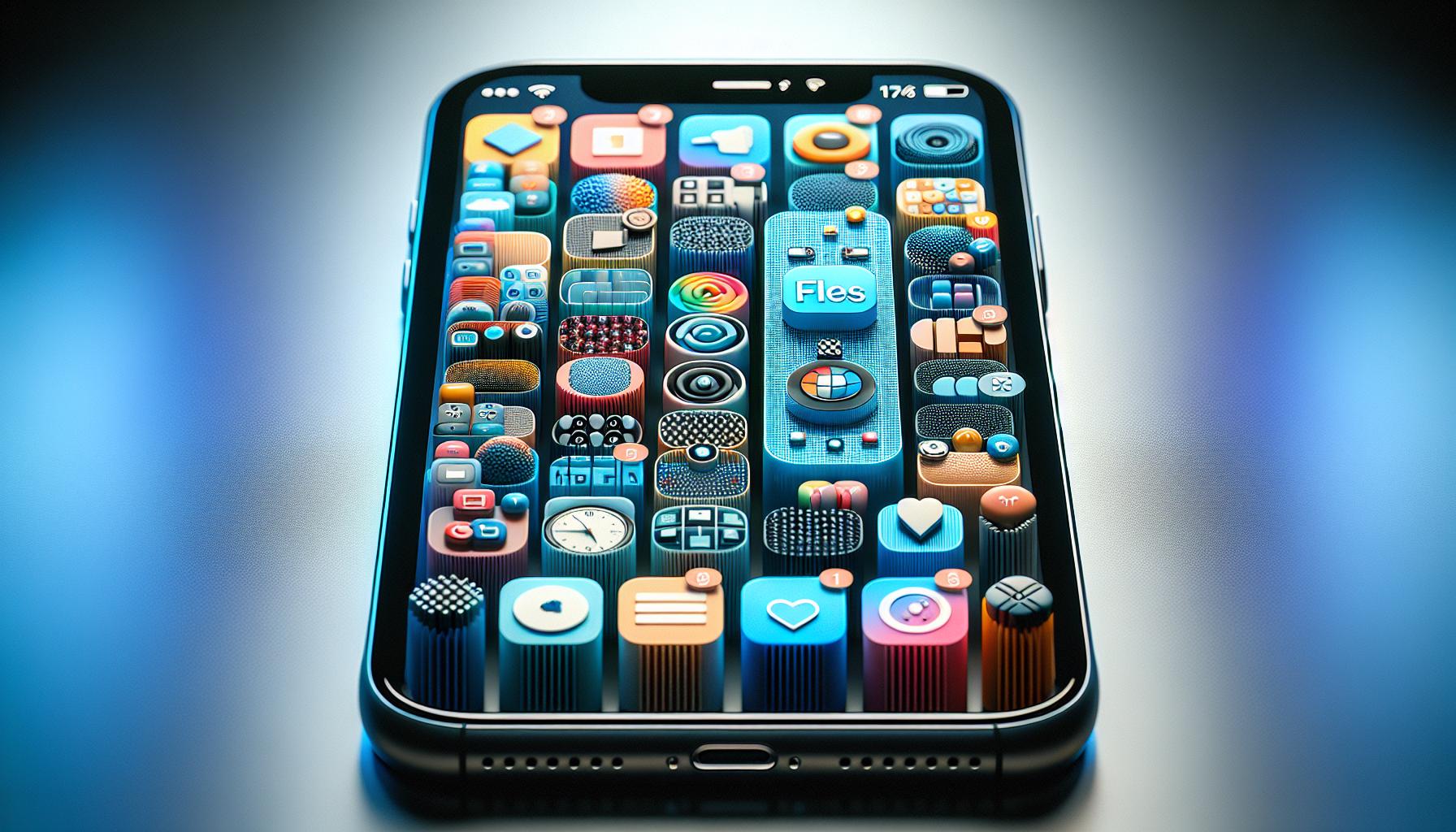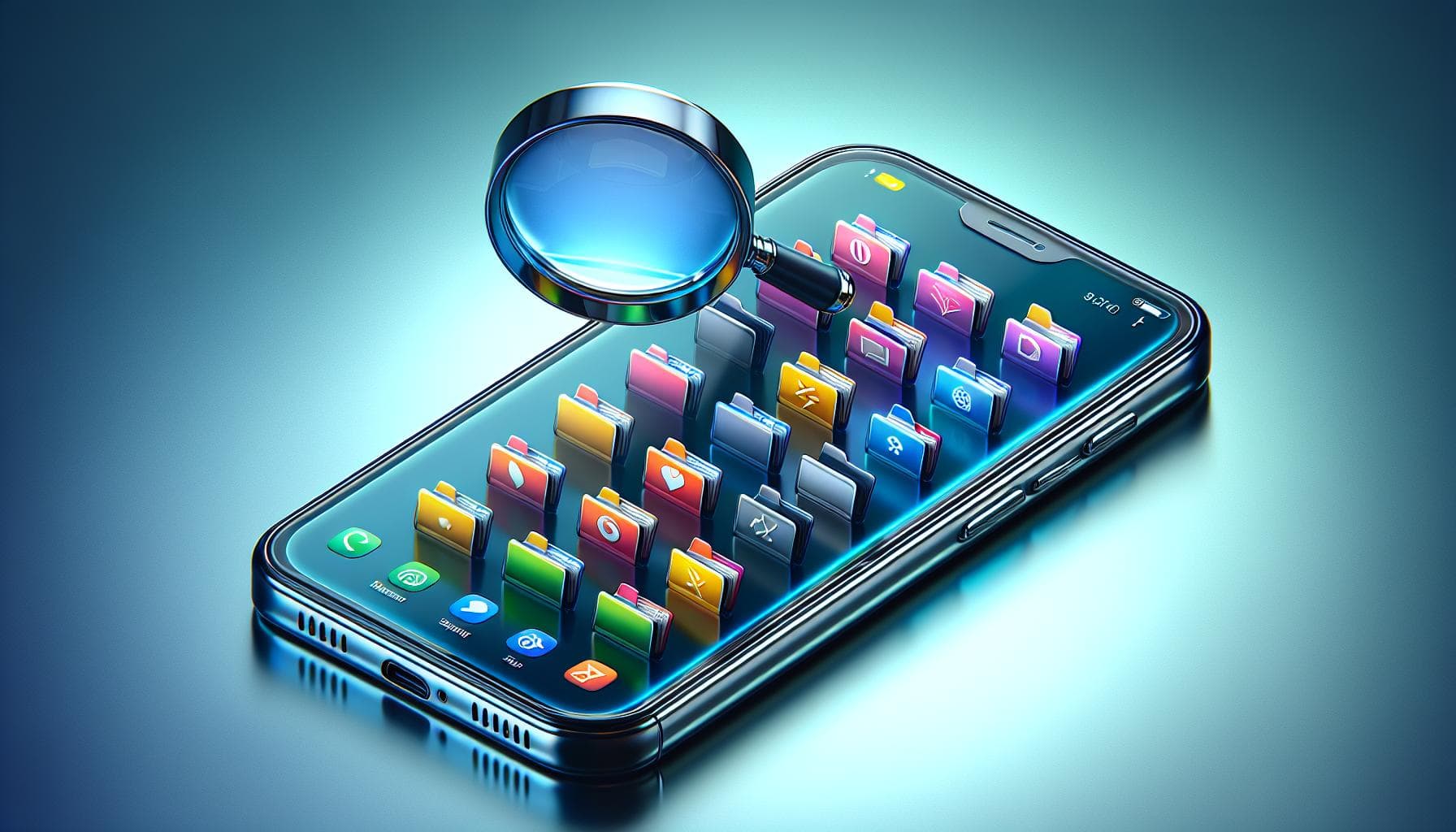Ever felt like you're on a wild goose chase trying to find your downloads on your iPhone? You're not alone. It's a common query, and you're about to get the answers you need.
Apple's iOS, unlike other operating systems, doesn't exactly make it easy to locate downloaded files. But don't worry, it's not as complicated as it seems. With a few taps and swipes, you'll be able to find your downloads in no time.
Why is finding downloads on an iPhone challenging?
Unlike other smartphones, the iPhone is unique in its design and functionality. Its unique architecture can often be the source of confusion for users, particularly when it comes to locating downloaded files. There are a few factors that might make this task appear daunting.
Absence of a traditional file system: Apple's iOS operating system works quite differently from Android or Windows platforms. In a traditional sense, you won't find a "Downloads" folder when you open the Files app.
Auto-organizing of files: On an iPhone, your downloads are automatically organized based on the format or the app they're associated with. For instance, a PDF file you've downloaded might go directly into the Books app, while a photo might be stored in your Photos app.
Downloading from different sources: If you're downloading files from an email or a different app like Dropbox, Google Drive, or a web browser, the process may vary, which can also add to the confusion.
Changing of file locations: To complicate things further, if you access a file and move it, you may face difficulties finding it again because it's not in its original download location.
These aspects can create a challenge when trying to find downloads on your iPhone. However, don't sweat it, it’s not impossible. Let’s go over how you can figure it out step by step. By the end, you'll be breezing through your iPhone file system like it's a walk in the park.
Understanding the iOS file system

Think you're alone? Hardly. There are thousands of people who are baffled by their iPhone's file system. Unlike other phones or computers you've used, iPhones follow a different file organization system. Think of it as a well-curated library - it's not about where the book is, it's about where you can find it. That's a pretty unique take on a universal concept, don't you think?
At its core, iOS uses a non-hierarchical structure for file organization. This means that files aren't stored in specific folders or locations that you can easily navigate to. Instead, they're filed into an all-inclusive container accessible via the app that downloaded them.
If you download a PDF from your email, it'll get stored in the email app's folder, not some central 'Downloads' folder like on a computer. Voila! It obviously makes sense when you put it that way, but can be a real head-scratcher when you're first trying to wrap your head around it.
If you're struggling to find an image or a document, check the app that you downloaded it from. This could be your email app, Safari, your photos app, or any other app that can download files. As unusual as it sounds, this is the Apple way, designed to ensure that users always know where they can find their files.
Expecting a file explorer? You'll find none but the Files app. It serves as a file explorer, of sorts, allowing you to view and open files from various apps in one place. Consider it as a sort of File Manager, but with the twist of being a recent addition. Surprised to see this in your list of apps? You're not alone, but it's there to help you out.
While this system may be a cognitive challenge, it's meant to simplify your digital life. This approach eliminates the need for users to understand file paths or downloads folders. Once you get a grip on this, you'll realize it's a neat solution, tailor-made to keep your mobile experience tidy, organized, and intuitive.
Using the Files app to find downloads
Navigating the file system on your iPhone might seem daunting at first, especially due to its unconventional setup. However, Apple's built-in Files app provides a central hub for managing your files.
This native application is a wonderful tool that gathers all files stored on your iPhone across various apps in one place. Just locate the Files app on your device, typically found among the pre-installed suite of applications from Apple. Open it and let's guide you through the steps.
Firstly, you'll be greeted by a clean, intuitive interface. The Browse tab at the bottom left of your screen should be your go-to button. Tapping on it will reveal a new screen with various locations: iCloud Drive, On My iPhone, Recently Deleted, and any third-party storage services you've connected to your iPhone like Dropbox or Google Drive.
Select On My iPhone. This category lists the local folders where apps on your iPhone store their files. For downloaded files, look for the Downloads folder or the name of the app you downloaded the file through. For instance, if you've downloaded a PDF through Mail, you'll find it in the Mail folder.
Files app considers your digital need for organization. It includes a sort feature you can access by tapping on the Sort button at the top right corner of the screen. From here, you can arrange your files by name, date, size, or tags - making the hunt for certain files easier.
By practicing these steps, you'll be a pro to access and manage your downloaded files on your iPhone in no time. You'll see that the Files app stands not to overcomplicate, but simplify the user experience.
Searching for downloads using Spotlight search
Another fantastic way to locate your downloads on an iPhone is Spotlight Search. This powerful tool is built right into your iPhone. It empowers you to quickly find specific files, apps, or even pieces of information online.
To initiate Spotlight Search, simply swipe down from the middle of the HOME screen. A search bar will appear, where you can begin typing the name of the file you're looking for. As you type, your iPhone will start generating results.
It's important to note that Spotlight Search's capabilities go beyond searching downloads. It also scans through your messages, notes, emails, and even looks up suggestions from the web. Thus, with its comprehensive search capabilities, there is a high probability of quickly finding what you are looking for.
It's worth remembering to be as specific as possible when entering search queries. If you're searching for a particular downloaded document, type in the title precisely. More specificity will spare you time scrolling through results and you'll probably locate the file you need in no time.
Furthermore, you can configure Spotlight Search to prioritize downloads. Navigate to Settings > Siri & Search > Files, then adjust the toggle to ensure Spotlight suggests files from your Downloads. Utilizing this feature will further speed up the process of finding downloads.
Managing downloads with third-party apps

Sometimes, the native solutions might not just cut it for you. That's when third-party apps step in. These specialized applications are designed with features to better manage, locate, and access your downloads on iPhone.
Let's dive into some of these apps.
Download Manager Apps
Apps like "Documents by Readdle" and "FileApp" act as a central spot for all your downloads. These apps allow you to not only download files but also view, manage, and transfer them. Here's how you can use them:
- Download and open the selected app
- Use the built-in browser to navigate to a website or portal where your files are
- Download files directly to the app's interface
Cloud Storage Apps
If you're regularly juggling documents, images, and files, consider using cloud services like iCloud Drive, Google Drive, or Dropbox. With these, you don't need to worry about eating up your iPhone's storage space.
- Once your files are saved in the cloud, you can view or download them from any device
- Most of these apps have a search function, which makes locating files a breeze
Utility Apps
Utility apps like "AnyTrans" or "iExplorer" transfer files between your computer and iPhone—allowing a lot more flexibility. They provide a detailed view of all your downloads and you can even sort, export, or delete files directly from the interface.
Remember, while these third-party apps do offer numerous additional features over the native Files app or Spotlight Search, they also require learning a curve. So, give them a try and adapt to the one that best suits your needs.
You're now armed with more ways to find and manage downloads on your iPhone! Don't forget, the key is to stay organized and know where your files are landing in the first place.
Conclusion
So, you've discovered the ins and outs of finding downloads on your iPhone. It's clear that Apple's built-in tools like the Files app and Spotlight Search can be your first port of call. But don't forget about the potential power of third-party apps like Documents by Readdle or FileApp. They might take a bit of getting used to, but they can offer you more control and flexibility. And remember, it's all about staying organized. Knowing where your files are saved from the get-go can save you a lot of hassle down the line. With these tools and tips, you'll never lose track of your downloads again. Now, go forth and download with confidence!
Frequently Asked Questions
Q1: How can I locate downloaded files on my iPhone?
You can locate your downloaded files by using the built-in Files app or Spotlight Search feature in your iPhone. Also, knowing where files are saved in the first place helps to locate them easily.
Q2: Are there any third-party apps to help locate and manage downloaded files?
Yes, third-party apps like "Documents by Readdle," "FileApp," and utility apps like "AnyTrans" and "iExplorer" can help manage, locate, and access downloads. However, be aware that these apps may require a learning curve.
Q3: What additional features do third-party apps offer for managing iPhone downloads?
Third-party apps offer additional features such as enhanced search capabilities, file categorization, and more flexibility in handling files. But, these can sometimes call for a learning curve.
Q4: What's the importance of staying organized with my file downloads?
Staying organized helps in easily locating the files when required, saves time, and increases productivity. It's crucial to have a basic understanding of the download location to retrieve the files quickly.
Q5: Why would I need to use the Spotlight Search?
Spotlight Search is a helpful tool when you need to find a file quickly and precisely. It searches your entire device, including downloads, giving a comprehensive search result.




